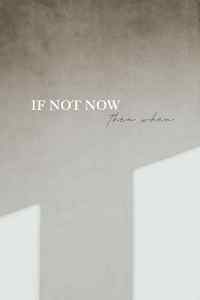On Sustaining Freedom in Your Creative Process: A Conversation with Writer Claudia Dey
In a literary landscape where conformity often overshadows originality, Claudia Dey stands as a beacon of artistic integrity and innovation. Her latest novel, Daughter, has garnered critical acclaim for its aliveness, originality, and propulsive storytelling. In this exclusive conversation, Dey delves into her creative process, sharing her unique perspectives on writing, the significance of sustaining freedom in one’s work, and the challenges and rewards of being an experimental and rebellious writer in a commercial landscape.
The Essence of a Good Novel: Aliveness, Originality, and Propulsion
For Dey, a good novel possesses a captivating quality of aliveness, a sense of sentience and originality that sets it apart from the ordinary. She seeks books that hold their own providence, revealing the unique voice and vision of their authors. Aliveness, originality, and propulsion emerge as key elements in her literary compass, guiding her towards works that resonate deeply with her.
“I look for novels that are alive, that have their own sentience and originality,” Dey explains. “I want to be captivated by the story, to feel like I’m being transported to another world. And I want to be propelled forward by the narrative, to be compelled to turn the page and find out what happens next.”
The Art of Propulsion in Storytelling
Dey emphasizes the significance of propulsion in creating a captivating read. She believes that every page must contain something that compels the reader to turn it, ensuring that the narrative mechanism remains unbroken. In her novel Daughter, the shifting points of view contribute to the book’s momentum, creating a dynamic and immersive reading experience.
“Propulsion is essential in storytelling,” Dey asserts. “Every page has to have something that makes the reader want to turn it, whether it’s a cliffhanger, a shocking revelation, or simply a beautifully written sentence. In Daughter, I used shifting points of view to create a sense of momentum and keep the reader engaged.”
The Power of Shifting Perspectives
Dey’s seamless transitions between multiple points of view in Daughter showcase her skill in crafting a multifaceted narrative. The shifting perspectives not only add depth and complexity to the characters but also provide readers with a more nuanced understanding of the family dynamics at play. Dey highlights the importance of avoiding a hero/villain dichotomy, asserting that life and fiction should reflect the complexities of human nature.
“I wanted to avoid the trap of creating a hero and a villain,” Dey explains. “In real life, people are rarely all good or all bad. We all have our strengths and weaknesses, our virtues and our flaws. I wanted to create characters that were complex and relatable, that readers could empathize with and understand.”
Family Dynamics as a Source of Inspiration
Family, with its inherent closeness, claustrophobia, and compulsion, serves as a rich source of inspiration for Dey’s writing. She explores the transformative revolutions that can occur within families, emphasizing the need for internal change rather than external validation. Her characters grapple with fundamental questions of personhood, identity, and the impact of familial relationships on their lives.
“Family is a microcosm of society,” Dey observes. “It’s a place where we learn about love, loss, power, and control. It’s also a place where we can be our most vulnerable and our most authentic selves. I’m fascinated by the dynamics of family life, and I often draw inspiration from my own experiences and observations.”
The Intimacy of the Sentence
Dey finds solace and freedom in the intimacy of the sentence, a space where the writer and reader engage in a private communion. She believes that a well-crafted sentence can bypass rational analysis and enter the reader’s bloodstream, creating a visceral and bodily experience. This pursuit of intimacy through language guides her writing process, allowing her to connect with readers on a profound level.
“The sentence is the basic unit of storytelling,” Dey says. “It’s where the magic happens. When I write, I try to create sentences that are alive and evocative, that have a rhythm and a music to them. I want my sentences to resonate with readers on a deep level, to create a visceral and bodily experience.”
The Bold Choice of Minimal Punctuation
In Daughter, Dey makes the unconventional choice of omitting quotation marks and separate lines for dialogue, creating a stark and visually distinct text. This bold decision stems from her desire to eliminate any interruptions between the reader and the narrative. She trusts in the intelligence of readers to discern spoken dialogue from internal thoughts, aiming to create a seamless and immersive reading experience.
“I wanted to create a sense of immediacy and intimacy between the reader and the characters,” Dey explains. “By eliminating quotation marks and separate lines for dialogue, I hoped to create a more fluid and immersive reading experience. I trust my readers to be intelligent enough to figure out who is speaking and when.”
The Art of Seamless Flashbacks
Dey’s masterful use of flashbacks in Daughter demonstrates her ability to weave past and present into a cohesive narrative tapestry. She draws inspiration from the authenticity of dreams, presenting flashbacks as vivid and unadorned experiences that mirror the workings of the human mind. By avoiding framing or commentary, Dey aims to preserve the aliveness and immediacy of these flashbacks, mirroring the way memories emerge in our consciousness.
“I wanted the flashbacks in Daughter to feel like dreams,” Dey says. “I wanted them to be vivid and unadorned, without any framing or commentary. I wanted readers to feel like they were experiencing the past alongside the characters, rather than being told about it.”
The Creative Process: From Beginning to End
Dey’s creative process begins with an image or a voice that sets the stage for her story. She immerses herself in extensive reading, note-taking, and writing, gradually allowing the narrative to take shape. The first draft, for Dey, is a sacred space of pre-scrutiny and pre-analysis, where she remains faithful to the voice that guides her writing.
“My creative process is a bit like a







